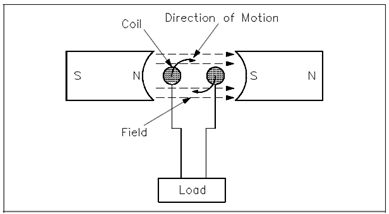Magnetic Induction:
Electromagnetic induction was discovered through Michael Faraday in the year of 1831. Faraday found in which if a conductor "cuts across" lines of magnetic force, or if magnetic lines of force cut across a conductor, a voltage, or EMF, is induced into the conductor. Let consider a magnet along with its lines of force from the North Pole to the South Pole display in the Figure. A conductor C that could be moved among the poles of the magnet is connected to a galvanometer G that could detect the presence of voltage or EMF. Whenever the conductor is not moving, zero EMF is denoted through the galvanometer.
Zero EMF is still indicated by the galvanometer if the conductor is moving outside the magnetic field at position 1. Whenever the conductor is moved to position 2, the lines of magnetic force will be cut through the conductor, and the galvanometer will deflect to point A. for Moving the conductor to position 3 will cause the galvanometer to return to zero. Through reversing the direction in that the conductor is moved (3 to 1), the similar results are noticed, but of opposite polarity. If we contain the conductor stationary in the magnetic lines of force, at position 2, the galvanometer denotes zero. This fact displays in which there must be relative motion among the conductor and the magnetic lines of force in order to induce an EMF.

Figure: Induced EMF
The most important application of associative motion is seen in electric generators. Within a DC generator, electromagnets are arranged in a cylindrical housing. Conductors, in the form of coils, are rotated on a core like that the coils continually cut the magnetic lines of force. A result is a voltage induced in each of the conductors. These conductors are linked in series, and the induced voltages are added together to generate the generator's output voltage.